JSON replacer is recursive. This then means it uses the same array for all objects it comes across. In other words, it uses the same values to map BAD.g's value. Since, Bad.g's value does not have any keys matching the ones you provided, nothing will get mapped properly. This means we have to add "2" to your array. Now "2" also has an object with different keys. We have already accounted for "b", so now we just need to add "w" to your array.
When providing an array to the replacer, best to think of the array as a list of all the keys you want mapped.
DEMO: http://jsfiddle.net/dirtyd77/whv7x6xc/4/
console.log(JSON.stringify(BAD, ['a', 'b', 'c', 'd', 'e', 'g', '2', 'w']));
Hope this helps and let me know if you have any questions.
Here is also a snippet from the documentation,
If you return any other object, the object is recursively stringified into the JSON string, calling the replacer function on each property, unless the object is a function, in which case nothing is added to the JSON string.
In the case for dynamic keys, you can always create a function to push to an array and use that array for your whitelist. Here is an example:
DEMO: http://jsfiddle.net/dirtyd77/whv7x6xc/5/
var BAD = {
"a": "2",
"b": 1,
"c": "Nexus",
"d": "Alligator",
"e": 5,
"f": 1431807036,
"g": {
"2": {
"w": 17,
"b": 5
}
}
}
var whitelist = [];
iterate(BAD);
console.log(whitelist, JSON.stringify(BAD, whitelist));
function iterate(obj){
for(var key in obj){
// may have to do some checking to ignore any keys you don't care about
whitelist.push(key);
// if value is an object, will use this same function to push to whitelist array
if(typeof obj[key] === 'object'){
return iterate(obj[key]);
}
}
}
You can also just use your existing whitelist and just append keys on your g key (given that isn't dynamic):
DEMO: http://jsfiddle.net/dirtyd77/whv7x6xc/6/
var whitelist = ['a', 'b', 'c', 'd', 'e', 'g'];
iterate(BAD.g);
console.log(whitelist, JSON.stringify(BAD, whitelist));
function iterate(obj){
for(var key in obj){
whitelist.push(key);
if(typeof obj[key] === 'object'){
return iterate(obj[key]);
}
}
}
